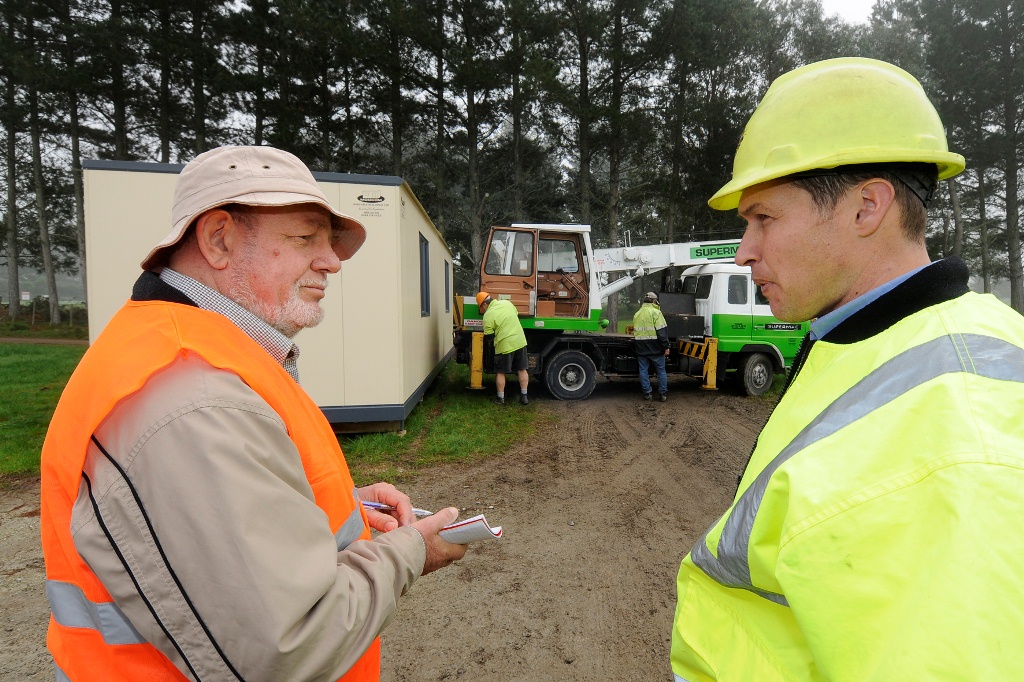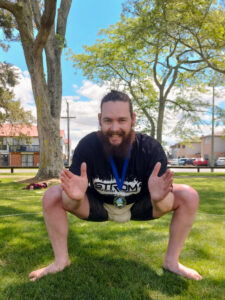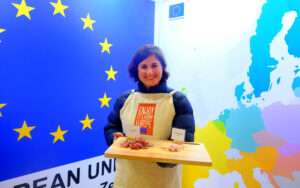Memories abound as the 43rd Fieldays kicks off
National Agricultural Fieldays veterans recall the show’s early days.
The first exhibitors have arrived and are not long opened for business. The queue for coffee extends some 20 metres. There is heavy fog and a strong southwesterly. A man in light clothing hurries into a nearby store and emerges minutes later wearing the warmest gear he could get. A couple of farmers chuckle to themselves as they turn up the wind collars to their raincoats.
A young woman, wearing what were beautiful, white leather, high-heel boots, tiptoes along the edges of a roadway. The mud comes practically to her ankles.
Kingsley Field can remember those days.
“There used to be some wonderful puddles of mud.”

This was in 1969 when the Fieldays were a relative blip on the local event calendar, held across two days at Te Rapa racecourse in Hamilton. Now held at Mystery Creek, they occupy a full four days and significantly improved landscaping means the site resembles concreted pavement far more than a paddock.
These days the Fieldays attracts 120,000 visitors annually, many returning each year. Despite the increased numbers, the types of people who attend remains essentially unchanged.
“Regardless of how cold or how wet, you’ll see people out there in jandals and you’ll see men in smart shoes and suits,” Field says.
“But you’ll also see farmers and other people in rough gumboots that look ancient.”
Field has been a journalist for about 40 years and can trace his Fieldays involvement to his very junior days of reporting.
To hear him tell it, he fell into the profession one day and never fell out of it. He was a young farmhand on an errand to town – there was a hay baler on the farm that needed a replacement part – when a whim led him to the Waikato Times offices to apply for a job. A fortnight later he made a return trip to town – the same hay baler needed another part – and thought he had better see about that job. That next Monday he had a job as a journalist and was told to go to the police station and see what was happening.
“The first question I asked as a journalist was ‘Where is the police station?’ ”
Field was soon asked to provide copy from a new agricultural festival to be held in Te Rapa. He had grown up on a dairy farm and it was presumed he understood the rural language. At that time the Fieldays was just another small event young journalists were required to cut their teeth at.
“I was the third-string bloke they called in to get some stories. I couldn’t even tell you what I wrote, to be honest.”
But Field enjoyed the opportunity to get outside the office, put on a pair of gumboots and talk to farmers. Over the next few years his main role at the Fieldays was as a journalist until one year he was asked for help by a family member. His nephew was selling wet weather clothing and other farming gear. He enlisted Kingsley as a second pair of hands. As it developed, Kingsley would perform this role at the Fieldays for over a decade.
He fondly remembers interacting with all public but of all the customers he served one “gentle man” towers over the rest.
“There is a huge farmer from out near Raglan, about 6’8” tall. He would shake my hand and his hand was the size of a frying pan. We always kept a pair of 5XL overalls, a 5XL raincoat and a pair of Size 15 gumboots especially for him.”
Field estimates he’s been to at least 30 Fieldays. In the last few years his role has changed again, as he has written a daily column for the Fieldays Exhibitor.
“I’ve always maintained an interest in farming things. This year I’ll wander about and kick tractor tyres.”
Another Fieldays regular, Doug Hartstone, has attended about 15 Fieldays with his wife Heather. They agree the Fieldays are much cleaner now.
“The roads around the venue used to be pretty muddy and wet. You might have to be towed in or towed out if it rained, which isn’t the case any more.”
The Hartstones are retired now. She worked as a primary school teacher, while he worked in the rural industry, mostly as a trucker. Doug has a keen interest in tools and equipment and has found plenty of “handyman stuff” at the Fieldays. He bought a solar torch 10 or 12 years ago that still works today. He also bought a motorcycle from the Fieldays. Heather likes to buy socks and other things made from stronger fabrics such as mohair and merino and finds they are plentiful at the Fieldays.
The Hartstones also bought their family vehicle at the Fieldays and, while in Napier recently, visited the people who sold it to them.
Doug’s only complaint concerns a lack of rest space.
“I’m an older person now and there’s not enough seating. I’d like to be able to sit down for a while on seats, or chairs or even bales of hay. To me that’s lacking.”
Also back for more this year is Colin Gordge, an ex-chairman of Waikato Federated Farmers. Like Field, he was actively involved with the Fieldays from its inception. He believes he has attended every year except for one and will be there again this week.
“I’m no longer farming now, I’m in my 87th year. I will be going along as an interested spectator.”
Not only did Gordge attend the inaugural Fieldays he was at the meeting held at a Te Rapa tavern that began the event’s near-50-year history. He can trace the development from a small event at the Te Rapa racecourse to outgrowing its venue and requiring new accommodation. He was involved in the decision to buy the property at Mystery Creek, which has been the home of the Fieldays ever since.
In his words, the event continues to “grow like Topsy”.
Gordge and other committee members used to work the gates from 5am till 8.30am when exhibitors were arriving. He notes that technology has seen the biggest advances, meaning that the manual and voluntary aspects of the Fieldays have been significantly reduced. However, he does not miss the earlier, less crowded Fieldays.
“Each year all of us older members get a great buzz when we see the tremendous growth that’s taken place. We take pride in that.”
Kingsley Field too has seen the Fieldays grow from being a minor gathering to an event that attracts international interest. He has one strong recommendation for anyone visiting the Fieldays this year and even gives directions. There are a couple who come from Westport to sell whitebait fritters. To reach their trailer from the Anchor gates, head south and it’s about 100 metres on the left-hand side.
“They are the best whitebait fritters this side of Venus, easily.”




